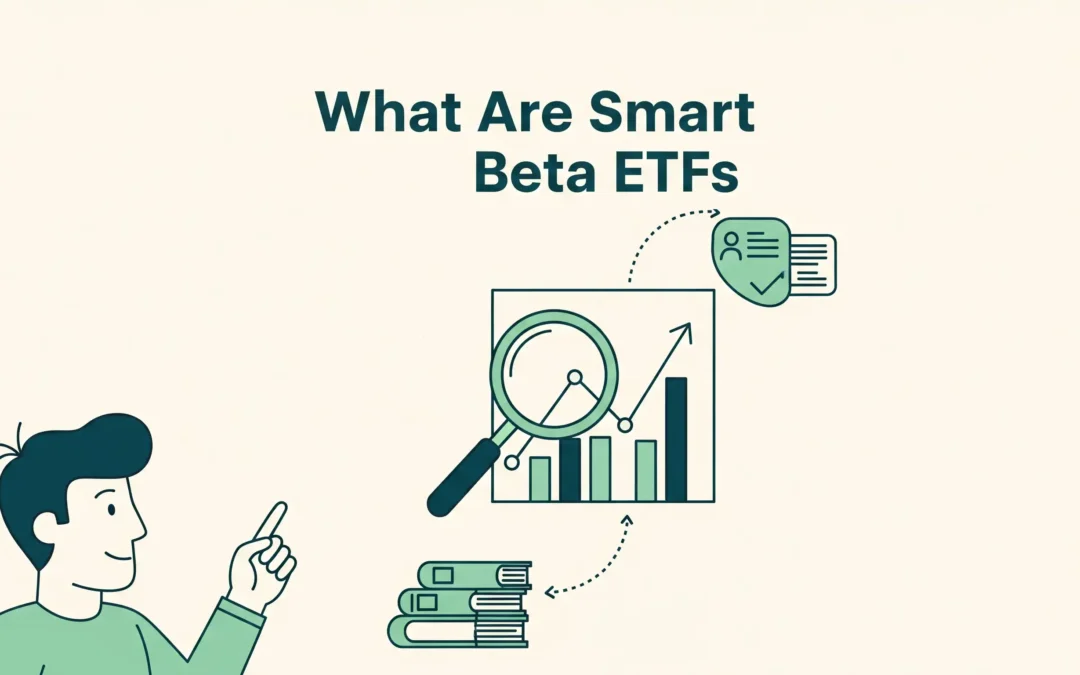Taking investment decisions is often influenced by herd mentality and bias. Too much reliance on other sources and opinions of other people may stop you from investing in efficient but less popular investment options. Smart beta ETFs are one of these, which are different from a traditional ETF but generate good returns. Now you may be thinking, what are Smart beta ETFs, right?
Let us clear your confusion in this article. It will help you understand what Smart Beta ETFs are, how they differ from traditional ETFs, and whether they fit your investment approach.
What Is a Smart Beta ETF?
An exchange-traded fund that tracks a customised index using alternative weighting techniques instead of conventional market capitalisation is known as a Smart Beta ETF. Although Smart Beta ETFs are designed with a passive, rules-based approach focused on elements such as value, quality, or low volatility, it’s important to note that while these strategies have at times delivered strong long-term returns, outperformance is not guaranteed in every market cycle.
Key Features:
- Factor-driven: Concentrates on tried-and-true investment elements such as low volatility, value, or momentum.
- Alternative weighting: Makes use of unique metrics such as volatility, earnings, or equal weight instead of market capitalisation.
- Moderate costs: Slightly more expensive than standard ETFs, but generally less expensive than active mutual funds.
- Rule-based strategy: More strategic than cap-weighted indexing, but less subjective than active management.
- Semi-passive nature: Provides tradability and transparency similar to standard ETFs, but with more intelligence in stock selection.
How Smart Beta ETFs Aim to Outperform
It is important to understand how smart beta ETFs work to get more clarity on the topic.
Working:
1. Selection of Factors
The stocks are selected based on the following factors:
- Value: It emphasises stocks with low P/E and P/B ratios that have the potential to perform well in the future.
- Momentum: focuses on stocks that have performed well recently.
- Low Volatility: Selects stocks with less fluctuating prices
- Quality: chooses businesses with strong financial standing, with high ROE, and low debt
- Size: prioritises growth-oriented small- or mid-cap stocks.
2. Weighting and Stock Selection
The next step is selecting stocks:
- The stocks are filtered based on the factor scores, and only the suitable ones are included.
- It chooses the best-ranked businesses that fit the requirements.
- These chosen stocks are then weighted in a different way, usually equally or according to their factor score rather than market capitalisation.
- By using this weighting method, undervalued or underappreciated stocks can gain exposure while avoiding overconcentration in large corporations.
3. Regular Rebalancing
At predetermined intervals, such as quarterly or semi-annually, Smart Beta ETFs rebalance their portfolios to:
- Include new stocks that now satisfy the factor requirements.
- Eliminate those that are no longer eligible.
- Rebalancing of weights is done according to the current stocks.
- Discipline and consistency are guaranteed by this rule-based procedure, which can aid in taking advantage of long-term trends.
| Basis | Traditional Index ETF | Smart Beta ETF |
| Selection Criteria | Market cap only | Depending on variables (quality, value, etc.) |
| Weighting Method | Bigger businesses are given more weight. | Weight according to the factor score or equally |
| Flexibility | Rigid; mirrors index | Flexible, customized index rules |
| Rebalancing Frequency | Infrequent | More frequent alignment with the strategy |
| Objective | Track the market | Outperform or reduce volatility |
Should You Invest in Smart Beta ETFs?
Let us now see if this is a suitable option for you or not.
Suitable:
- Medium to long-term investors aiming for consistent growth.
- Knowledgeable investors who comprehend factor investing and fundamental financial metrics.
- Cost-conscious people who wish to outperform index funds without having to pay the exorbitant fees associated with mutual funds.
- Investors looking for a variety of strategies, such as low volatility, quality, or value.
Consider factors:
- Factor strategies may perform poorly during specific market cycles if you’re investing for the short term.
- The expense ratios of certain Smart Beta ETFs might be marginally higher than those of conventional ETFs.
- It’s critical to comprehend the fund’s strategy to prevent it from conflicting with your objectives.
Bottomline
The conclusion can be drawn that smart bets ETFs can be a good option for you to invest in if you have knowledge about the company’s fundamentals. Individuals aiming to invest their money for medium to long term can opt for this option as it customizes and rebalances at regular intervals. This gives the investor the benefit of including all the stocks that match the objective of this ETF regularly.
However, it is important to consider other factors that may lower your net return, like high expense ratios, and see if the objective of the ETF aligns with your investing goals.


